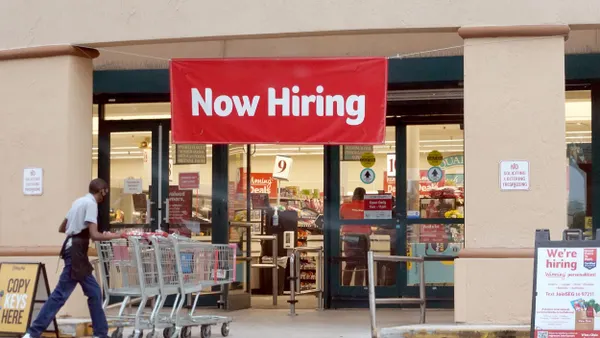Dive Brief:
- According to the results of a new survey, HR professionals and others involved in people management were 37% more likely to find work elsewhere and leave their current position than those in other job categories. Of the 50,000+ respondents in Culture Amp's employee engagement survey, more than 6,000 within the sample churned at some point.
- Based on the survey results, Culture Amp says that the best single indicator of employee churn was workers' responses to the statement: "I see myself still working at [Company] in two years time." The respondents who "strongly disagreed" with the statement were 136% more likely to churn than the average worker; those who "disagreed" were 100% more likely to churn; and those who gave a neutral response were 36% more likely to leave for another position.
- Besides job category, the survey also factored in tenure and age. Respondents with three to six months on staff were 19% more likely to churn than those with less than three months tenure (12%), and young workers from 18 to 24 were 40% more likely to leave for another job.
Dive Insight:
Churning is not only the rate at which employees leave their jobs, but the measure of how often employees leave a job for another opportunity during the course of their career. And it seems one way to figure out whether or not it will be an issue is to simply ask.
Retention continues to be a challenge for employers, as various surveys and reports have confirmed. The concerns include losing workers to a competitor in a tight labor market and dealing with the high cost of refilling positions. According to a CareerBuilder report, churning is the sign of a healthy economy; workers moving from job to job is more positive than in pre-Recession days, when far fewer openings were available. But employers will still need to be competitive by offering the benefits, career development and work flexibility that are attracting applicants in the first place and keeping new hires onboard.
HR directors have a 43% possibility of leaving their posts over other job categories, according to a Hiring Lab study. People management is no walk in the park, so it's not surprising for HR professionals to experience burnout — like the people they manage. A sound succession plan for HR leadership can help ensure continuity, which is critical to maintaining an engaged, productive staff.
No one is better situated to lead an organization forward than HR professionals, with a focus on improving the employee experience through upskilling, branding, adopting and maintaining fair pay practices and creating workplaces where diversity and inclusion are central to their organization's culture.












